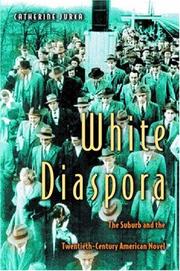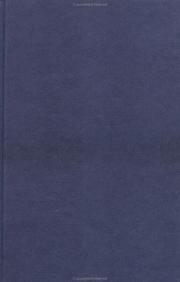| Listing 1 - 3 of 3 |
Sort by
|
Book
ISBN: 9781609382285 Year: 2014 Volume: *2 Publisher: Iowa City University of Iowa Press
Abstract | Keywords | Export | Availability | Bookmark
 Loading...
Loading...Choose an application
- Reference Manager
- EndNote
- RefWorks (Direct export to RefWorks)
Leven in de voorsteden in de literatuur --- Suburban life in literature --- Vie de la banlieue dans la littérature --- American fiction --- Suburban life in literature. --- September 11 Terrorist Attacks, 2001 --- Authors, American --- Roman. --- Amerikanisches Englisch. --- Vorstadt. --- American fiction. --- Influence (Literary, artistic, etc.). --- History and criticism. --- Influence. --- Political and social views. --- 2000-2099. --- 21st century --- History and criticism --- September 11 terrorist attacks, 2001 --- Influence --- Authors [American ] --- Political and social views --- Ford, Richard --- Criticism and interpretation --- Lee, Chang-rae --- Franzen, Jonathan --- Roth, Philip --- Tyler, Anne --- Jen, Gish --- Homes, Amy M.

ISBN: 1283339730 9786613339737 1400824133 0691057354 9781400824137 9781283339735 6613339733 Year: 2011 Publisher: Princeton, NJ
Abstract | Keywords | Export | Availability | Bookmark
 Loading...
Loading...Choose an application
- Reference Manager
- EndNote
- RefWorks (Direct export to RefWorks)
This is the first book to analyze our suburban literary tradition. Tracing the suburb's emergence as a crucial setting and subject of the twentieth-century American novel, Catherine Jurca identifies a decidedly masculine obsession with the suburban home and a preoccupation with its alternative--the experience of spiritual and emotional dislocation that she terms "homelessness." In the process, she challenges representations of white suburbia as prostrated by its own privileges. In novels as disparate as Tarzan (written by Tarzana, California, real-estate developer Edgar Rice Burroughs), Richard Wright's Native Son, and recent fiction by John Updike and Richard Ford, Jurca finds an emphasis on the suburb under siege, a place where the fortunate tend to see themselves as powerless. From Babbitt to Rabbit, the suburban novel casts property owners living in communities of their choosing as dispossessed people. Material advantages become artifacts of oppression, and affluence is fraudulently identified as impoverishment. The fantasy of victimization reimagines white flight as a white diaspora. Extending innovative trends in the study of nineteenth-century American culture, Jurca's analysis suggests that self-pity has played a constitutive role in white middle-class identity in the twentieth century. It breaks new ground in literary history and cultural studies, while telling the story of one of our most revered and reviled locations: "the little suburban house at number one million and ten Volstead Avenue" that Edith Wharton warned would ruin American life and letters.
American fiction - 20th century -. --- American fiction -- 20th century -- History and criticism. --- Race in literature. --- Segregation in literature. --- Suburban life in literature. --- Suburbs in literature. --- Whites in literature. --- American fiction --- Suburban life in literature --- Segregation in literature --- Suburbs in literature --- Whites in literature --- Race in literature --- American Literature --- English --- Languages & Literatures --- History and criticism --- Blancs dans la littérature --- Blanken in de literatuur --- Leven in de voorsteden in de literatuur --- Vie de la banlieue dans la littérature --- History and criticism. --- 20th century --- Lewis, Sinclair --- Criticism and interpretation --- Cain, James Mallahan --- Wright, Richard --- Burroughs, Edgar Rice --- White people in literature. --- White people in literature

ISBN: 1403963401 1403963673 Year: 2004 Publisher: Basingstoke ; New York : Palgrave Macmillan,
Abstract | Keywords | Export | Availability | Bookmark
 Loading...
Loading...Choose an application
- Reference Manager
- EndNote
- RefWorks (Direct export to RefWorks)
Green lawns, swimming pools, backyard barbecues: welcome to suburbia, the promised land of the American middle class. Or is it? To judge by the depiction of suburbia in prominent works of American fiction and film, the suburbs are also home to dysfunctional families, broken communities, and widespread misery. Clearly, despite the continued popularity of the suburbs as a place to live, the prevailing image of suburbia has changed markedly since the days of 'Leave It to Beaver' and 'Father Knows Best'. In this book, Robert Beuka argues that in order to begin to understand our conflicted relationship toward the suburbs, we need to understand how suburbia has come to be defined through its representation in the popular media and arts. SuburbiaNation looks carefully at the suburban landscape through the lens of fiction and of film, and Beuka weaves together such classics as 'It's a Wonderful Life', 'The Stepford Wives', 'The Great Gatsby', 'The Swimmer', 'The Graduate', and 'House Party' to discuss the suburb and its significance in American culture.
Banlieues dans la littérature --- Banlieues dans le cinéma --- Landscape in literature --- Landscape in motion pictures --- Landscapes in literature --- Landschap in de film --- Landschap in de literatuur --- Landschappen in de literatuur --- Leven in de voorsteden in de literatuur --- Paysage dans la littérature --- Paysage dans le cinéma --- Paysages dans la littérature --- Suburban life in literature --- Suburbs in literature --- Suburbs in motion pictures --- Vie de la banlieue dans la littérature --- Voorsteden in de film --- Voorsteden in de literatuur --- American fiction --- Landscape in literature. --- Landscape in motion pictures. --- Landscapes in literature. --- Landscapes in motion pictures. --- Motion pictures --- Suburban life in literature. --- Suburbs in literature. --- Suburbs in motion pictures. --- History and criticism. --- History. --- Landscapes in motion pictures --- History and criticism --- History --- 20th century --- United States --- CINEMA AMERICAIN --- ROMAN AMERICAIN --- VIE EN BANLIEUE DANS LA LITTERATURE --- PAYSAGES DANS LA LITTERATURE --- PAYSAGES AU CINEMA --- BANLIEUES DANS LES MEDIAS --- BANLIEUES DANS LA LITTERATURE --- HISTOIRE ET CRITIQUE --- 20E SIECLE
| Listing 1 - 3 of 3 |
Sort by
|

 Search
Search Feedback
Feedback About UniCat
About UniCat  Help
Help News
News